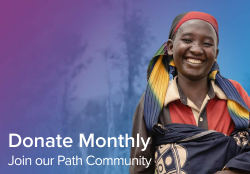Posts Tagged ‘chicago’
News from H.O.M.E.: Serving Asylum Seekers
Early in 2022, we featured a post by Hannah Thompson, World Relief Chicagoland’s Immigrant Family Services Volunteer Coordinator who works with the staff and community volunteers who serve asylum seekers through the H.O.M.E. Program. Now, Hannah is back, sharing what has changed since January.
First, what is the H.O.M.E. Program?
World Relief Chicagoland created the H.O.M.E. Program because we know that asylum seekers are among the most vulnerable immigrants. Though many have similar experiences as refugees and may have also fled their homes seeking safety, life in the U.S. looks very different. Asylum seekers do not have the same financial support as refugees. Instead, they must wait for their asylum case to be heard and for the U.S. to make a legal decision about whether they can become asylees. This can be a long process that takes months or years. And during that time, asylum seekers are socially, financially, and legally vulnerable.
Over the years, World Relief has seen countless asylum seekers become vital, contributing members of the community after being granted asylum and staying in the U.S. permanently as “asylees.” Yet while they wait, too many experience poverty, homelessness, or deep debt.
The H.O.M.E. Program is the chance to form a supportive community safety net for asylum seekers during this temporary stage of their immigration journey. H.O.M.E. provides Housing, Opportunity, Mutuality (Transformative relationships), and Empowerment for asylum seekers. With the support of volunteers who help provide short-term rental assistance and relational support, asylum-seeking families gain the chance to rebuild their lives – instead of remaining in limbo while they wait for their asylum case to be heard.
An October Update from the H.O.ME. Front
News from the H.O.M.E. Front
It is hard to believe that we are coming up on the two-year anniversary of launching the H.O.M.E. Program! Right now, I am looking back in amazement at all that has happened and how many special moments have emerged just in the last year!
As of October 2022:
- We have served 13 asylum-seeking families through the H.O.M.E. Program!
- 12 local churches have donated financially to cover rent costs, led the way in volunteering as teams to support families, or both!
There is one particularly beautiful relationship I’ve seen blossom. One of our church volunteer teams recently matched with a family living in their neighborhood. When the family and the team first met, the family was expecting their first child: a baby girl! To help the family prepare and celebrate, the team came together. They collected donations. And they even hosted a baby shower for the family!
As the baby’s birth date drew closer, the volunteers drove the family to and from the hospital. They were some of the first people to meet the new, healthy baby girl!
Being a new parent is a big learning curve. It’s an even bigger challenge for those already navigating a new country! Thankfully, the team, loaded with their own personal parenting experience, has been a ready source of support for navigating life with a newborn and for the new mom as she manages post-partum recovery. Without the H.O.M.E. Program and World Relief Chicagoland’s church partners, the family would not have had friends to support them in this new chapter or a home to bring their daughter to. We are so grateful to see this relationship flourish!
You Can Join in Welcoming Families H.O.M.E.
Volunteer teams and financial supporters like you ensure that asylum-seeking families reach important milestones like the birth of a baby, celebrating a new job, and more! With our H.O.M.E. partners, asylum seekers can move forward in life without worrying about how to pay rent or being at risk of homelessness.
World Relief Chicagoland needs more partners to walk alongside asylum seekers. Whether by volunteering, giving rent assistance, or both, you can make the difference and help welcome families “home.”
Learn More
Learn more about the H.O.M.E. Program and how you can get involved here!
Together, we can support asylum seekers as they seek safety.
How You Can Take Action for Refugees and Immigrants in Chicago
Though news channels and social media might fixate on issues on the national stage, one of the most important ways you can support your immigrant and refugee neighbors is by advocating for them on the local level. Advocating for action in your own community is one of the best ways to make a difference for the people around you – by tackling issues in your neighborhood, city, and state!
What is Community Advocacy?
First, we can define “advocacy” as seeking to influence those in positions of power, including elected officials, to enact change for those affected by a specific issue. Advocates use their own voices, positions, and knowledge to speak up and intercede on behalf of those who are suffering, in poverty, or need protection.
At World Relief, we think of advocacy as putting love into action for our immigrant and refugee neighbors, especially those who are in the most vulnerable positions. This means that we want to:
- Address structural inequality and violence
- Increase awareness of issues impacting immigrants and refugees
- Deepen empathy and understanding
- Catalyze engagement
- And ultimately, build a movement for justice!
On a local level, like in the neighborhoods of Chicago and the surrounding suburbs, advocacy can mean that you become a bridge. You have the power to share with your local representatives about the issues impacting immigrants and refugees in the community – facts, stories, and needs that they might not know otherwise! And you have the ability to ask them to take action to make life better for immigrants and refugees.
Why Advocate for Immigrants and Refugees?
If you believe that every person deserves to be treated with dignity and respect and has God-given value and rights, then you have the opportunity to be a strong voice for justice! There are millions of immigrants and refugees around the world and in our communities who are suffering and in vulnerable situations that put them and their families at risk.
Individuals, churches, and community groups have an important role to play. But we also know that our elected officials have the power to make decisions. They can create change on a much broader scale. And when we speak up, we can help them understand why it is important to help immigrants and refugees around the world and in the United States – and that it’s something we care about!
How Can I Be an Advocate?
Becoming an advocate for immigrants and refugees in your local community can take so many different forms! And at World Relief Chicagoland, we are here to help you take action in lots of different ways. We want you to know you are not alone, but part of a bigger movement. A community of advocates!
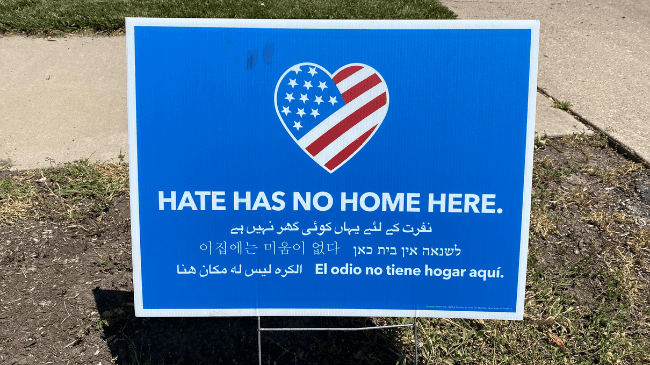
Ways to Get Started
1. Look Up Your Elected Officials
First, you can start by learning about your elected officials. Who are they? What are the issues they care about? If you are in Illinois, you can click here to search for your elected officials and use your address to find a list of people at a local, state, and federal level. In Chicago, you may also want to click here to find your ward’s alderman. Or if you are outside of Illinois, visit this page on USA.gov for help identifying your elected officials in other states.
Because these are the people you will call to share your perspective, write letters to, and reach out to for meetings, it’s a good idea to know who they are, what their focus areas are, and how you can engage.
2. Learn About the Issues Impacting Immigrants and Refugees in Your Neighborhood
If you are not an immigrant or refugee yourself, one of your first actions should be to learn more about the experience of immigrants in your community. Talking with your neighbors or others in your church or school communities can provide all kinds of insight! Ask them questions based on their own experience and what they think would make their lives better. And try talking to lots of different people to identify common themes. Don’t assume that there is only one “right” answer.
Reading and watching videos is another great way to learn! You can find all kinds of stories and helpful information from reading the World Relief Chicagoland blog. But don’t stop there! In addition to learning about the experiences specific to immigrants and refugees, (many of the biggest issues that impact them affect a broader group of people…such as people of color, religious or ethnic minorities, or low-income families), consider looking up issues like:
- Does your town have enough affordable housing?
- Are there sufficient healthcare and mental health resources?
- Do the schools in your area have enough teachers and educational supplies?
3. Take Note
As you learn, pay attention to the solutions that trusted leaders share. Organizations like World Relief are part of community coalitions and networks that share information and work to identify good solutions together. But there are plenty of experts in your community too. Take the time to ask your immigrant neighbors, organization leaders, and others what they think needs to change. And take note of what they say!
4. Mobilize
There are so many different ways you can mobilize your community to take action. Here are just a few ideas!
- Join Refugee Council USA (RCUSA) Advocacy Days. World Relief is part of RCUSA, which hosts advocacy days each year. These advocacy days bring together community members and organizations in support of refugee issues. When you sign up, you get to participate in training opportunities and meetings with members of Congress! You will get to join a facilitator and others in your community who care about refugees. Invite your friends and neighbors to join too by posting about these opportunities on social media.
- Attend city council meetings, school board meetings, and neighborhood council meetings in your area. Show up and pay attention to meetings where big decisions impacting your community are made. Additionally, you can use the information you have learned to inform your questions and bring refugee and immigrant issues to the forefront of the conversation.
- Lastly, learn more about World Relief Chicagoland’s advocacy efforts and how you can get involved!
Read More About How to Address Barriers
How the Affordable Housing Crisis Is Impacting Refugee Families
How to “Drive” Change by Donating Your Car
4 Ways to Read, Watch, and Listen to Powerful Immigrant and Refugee Stories
A Refugee Family’s Long Resettlement Journey
For refugees seeking to rebuild their lives, their journey to the United States can be long and fraught with challenges. While the average time it takes for a refugee to be vetted and screened to come to the U.S. is about two years, many people leave their homes long before. UNHCR reports that some refugees who flee crises in their home country end up living in refugee camps for years or even decades. However, the vast majority of refugees live in cities, where they may live in limbo for 10 to 26 years, often with limited job and educational opportunities. Nobody wants to become a refugee. And most hope and pray to return to their home country someday.
When that’s not possible, it’s important that countries like the United States welcome refugees and provide a way for them to rebuild their lives permanently. But while their arrival in the U.S. is a cause of celebration, refugees have not yet reached the end of their journey. Coming to the U.S. sets refugees down a new road full of obstacles and barriers they must overcome in order to thrive in their new country.
World Relief’s job is to help the community be a place of welcome for refugees so that they can overcome these challenges and truly celebrate belonging and making a new home. Learn more about how you can walk this path with new arrivals by going on the journey of a refugee family below.
First Day of a Refugee Journey in the U.S.
Behind the Scenes
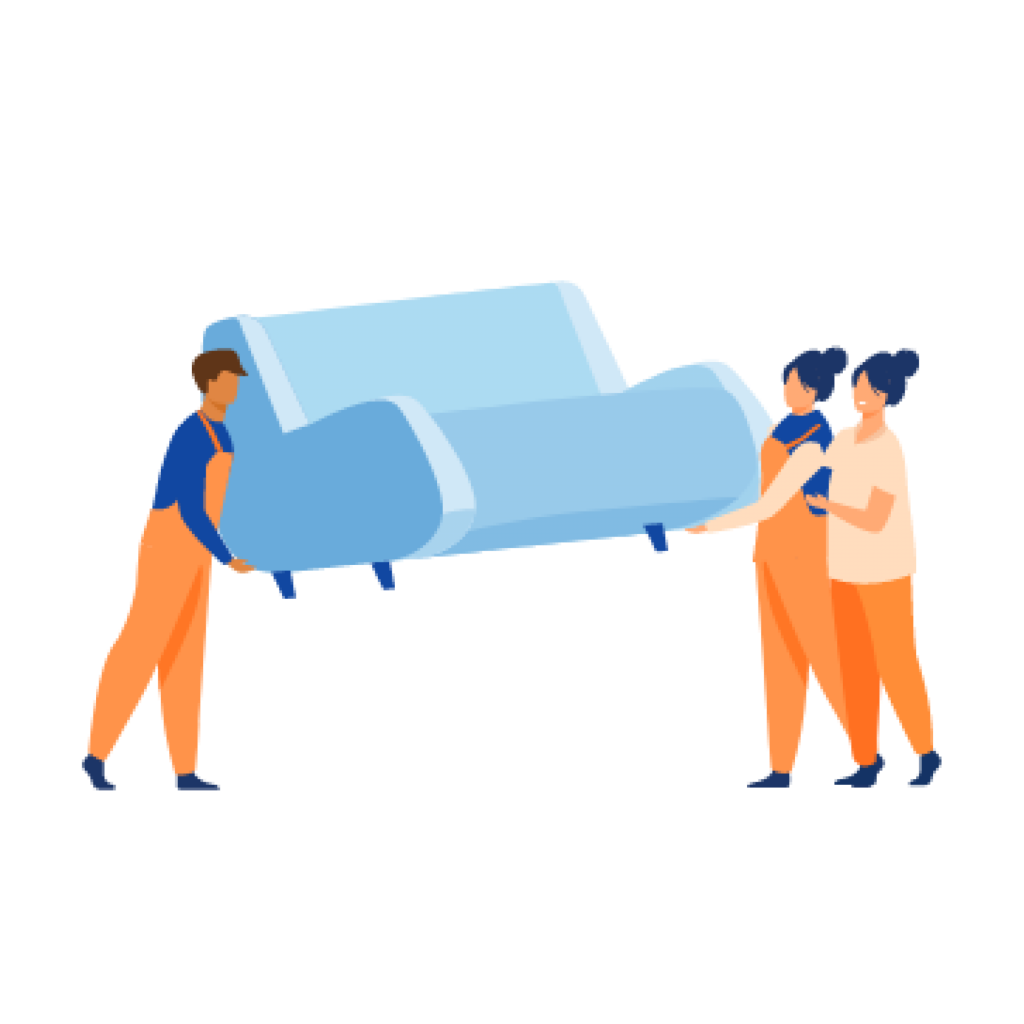
Even before a refugee family arrives, World Relief staff and volunteers from a local church or community group begin preparation for their arrival. Together, they move furniture and essentials into an apartment so that the family has what they need to feel comfortable and at home. By the time a refugee family arrives, they will have a home equipped with beds, a kitchen table, chairs, a couch, other furniture, and kitchen utensils. Volunteers like you also stock the pantry with familiar foods, coffee or tea, and cooking essentials. This helps provide a safe and welcoming place for a family to rest after their travels.
Arrival
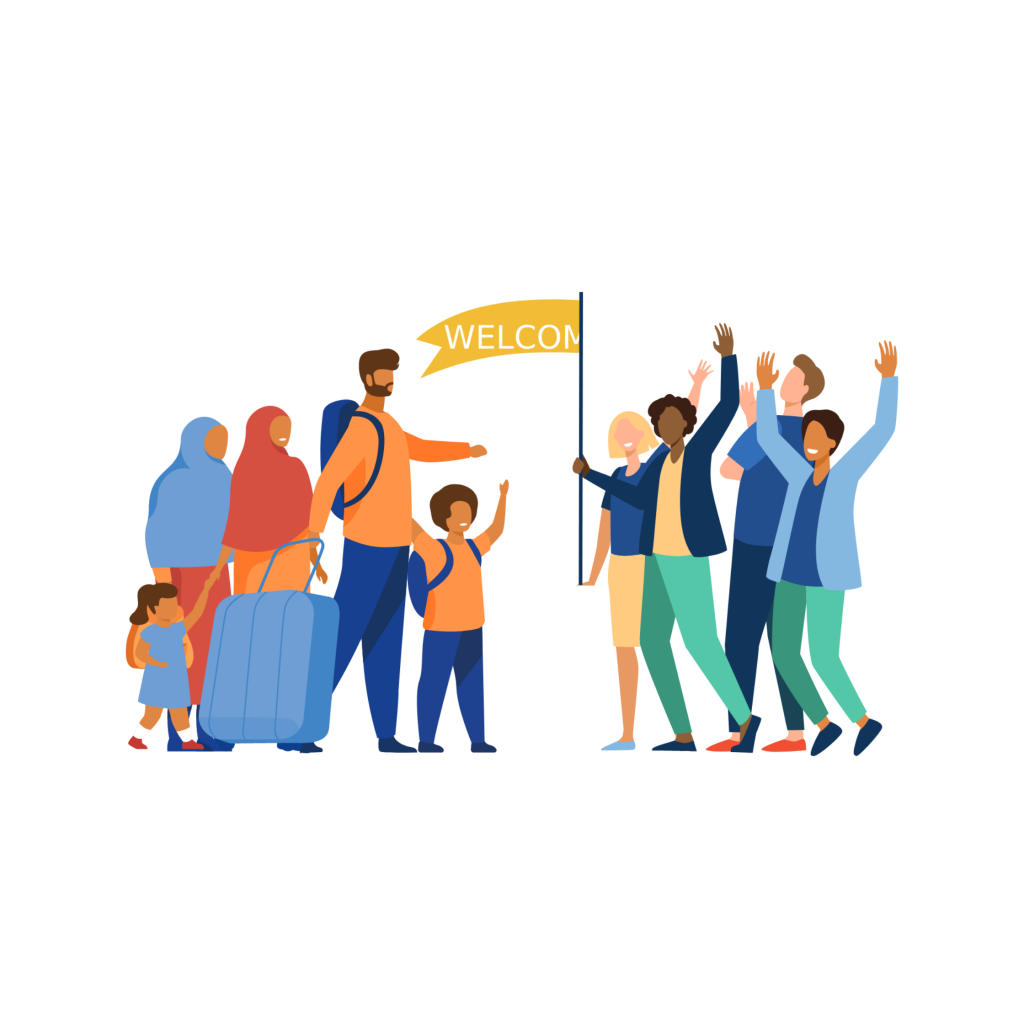
When a family or individual arrives to the United States, they often bring with them hopes and big dreams for the future. They are still mourning the lives and loved ones they left behind, but they also have expectations and goals for life in the U.S. From the time their plane lands at the airport, World Relief staff and people like you are there to welcome them and drive them to their new home.
First Week
Orientation to the U.S.
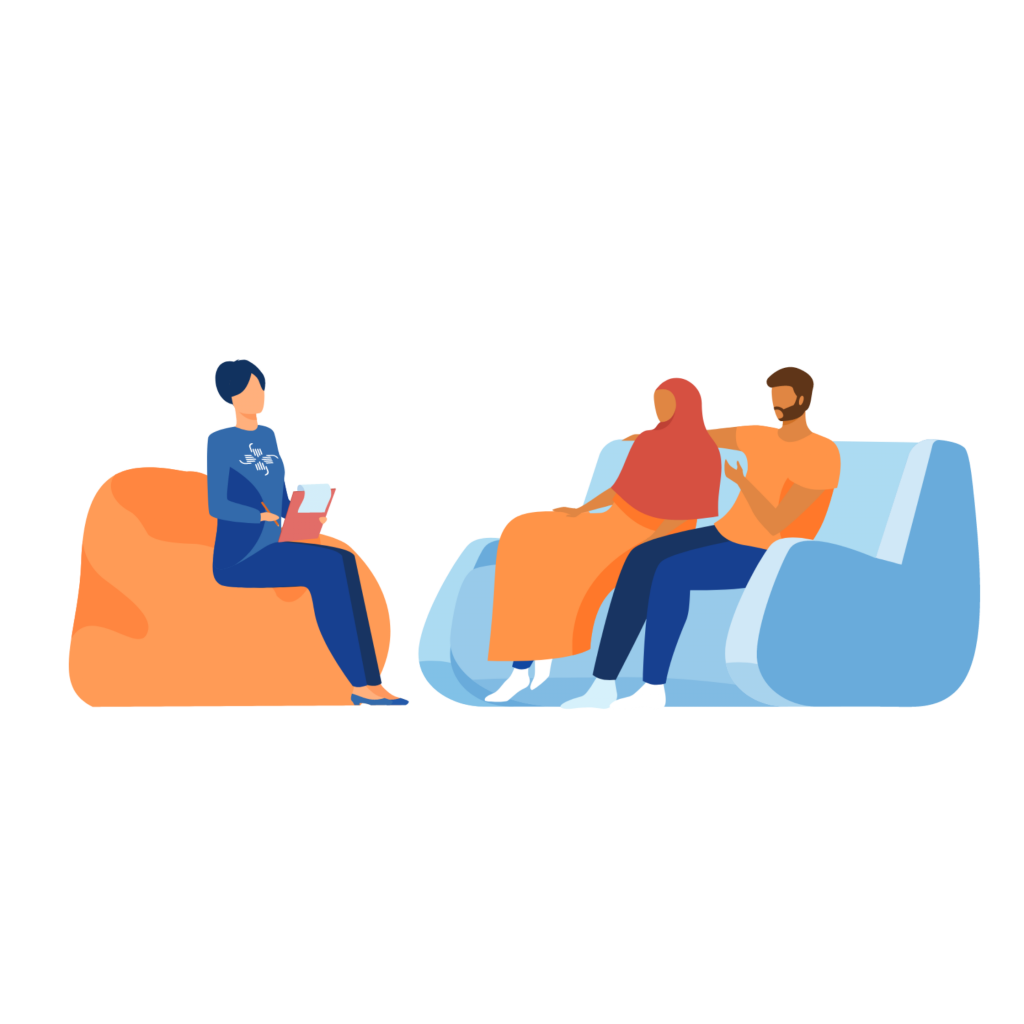
After a few days, the family sits down with World Relief staff and a Good Neighbor Team, a group of committed volunteers from the community who commit to supporting the family for the next six months. Together, they create an action plan to guide the family for the upcoming weeks as they settle in. The family and volunteers share with the family about the community and things they need to know.
First Month
Adjusting to the New Community
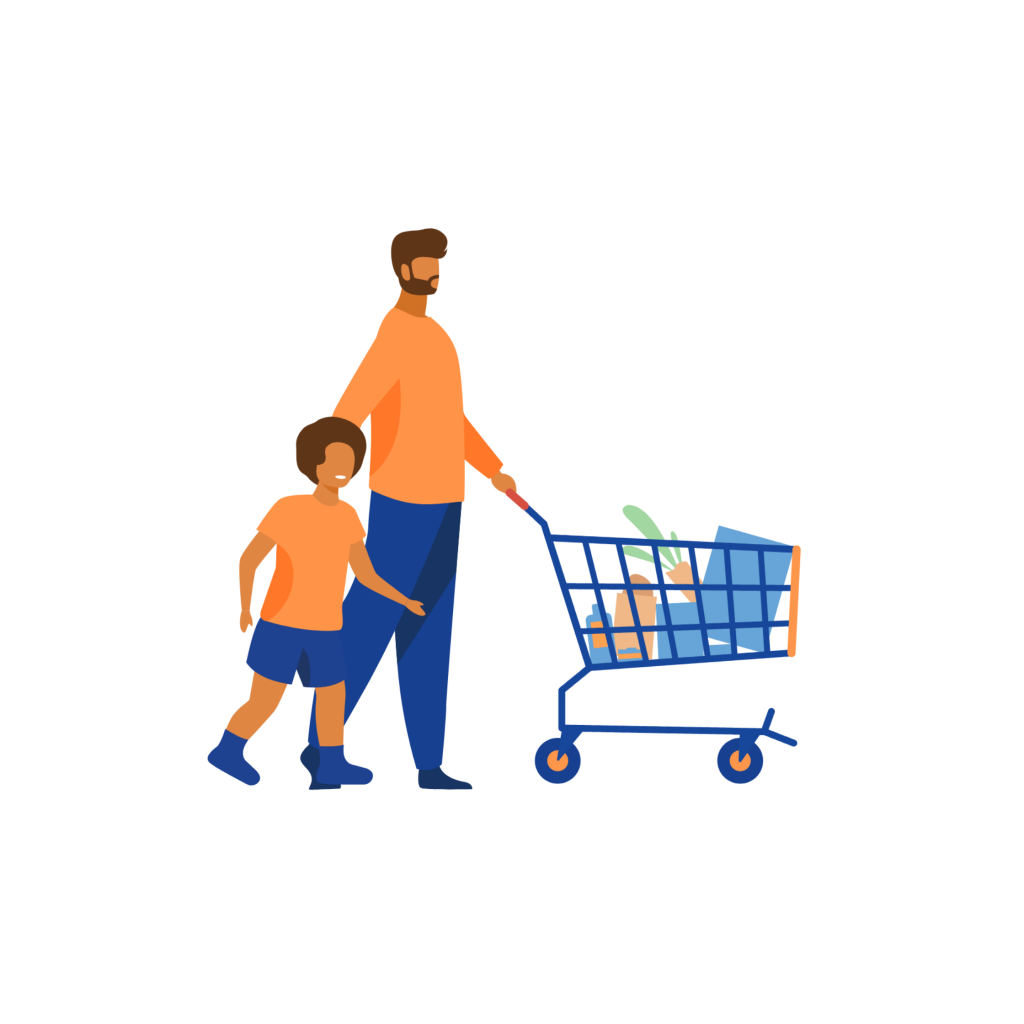
For the next few weeks, the family stays busy. There are errands to run. Doctors appointments to go to. Lots of paperwork. And there are many little tasks to do…everything from applying for social security cards to enrolling children in school.
First Three Months
Support for Children and Youth
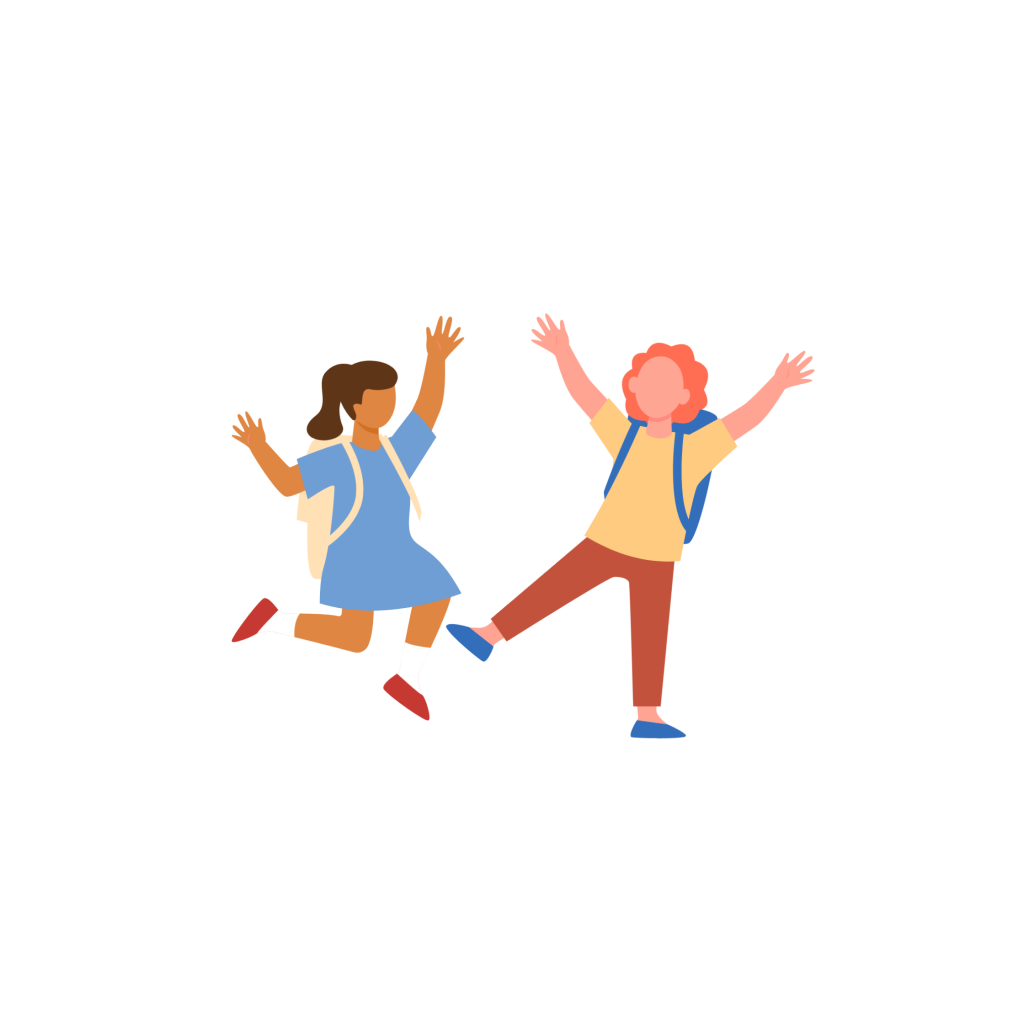
As the family adjusts, the kids get to participate in World Relief’s after-school clubs. There, they get homework help, play games, and meet other children. Social-emotional learning (SEL) activities help the children and youth process their emotions and build self-confidence. They learn and play alongside other children and practice important life skills like relationship-building and conflict resolution. And they get academic support from people like you so they can succeed in school!
Learning English
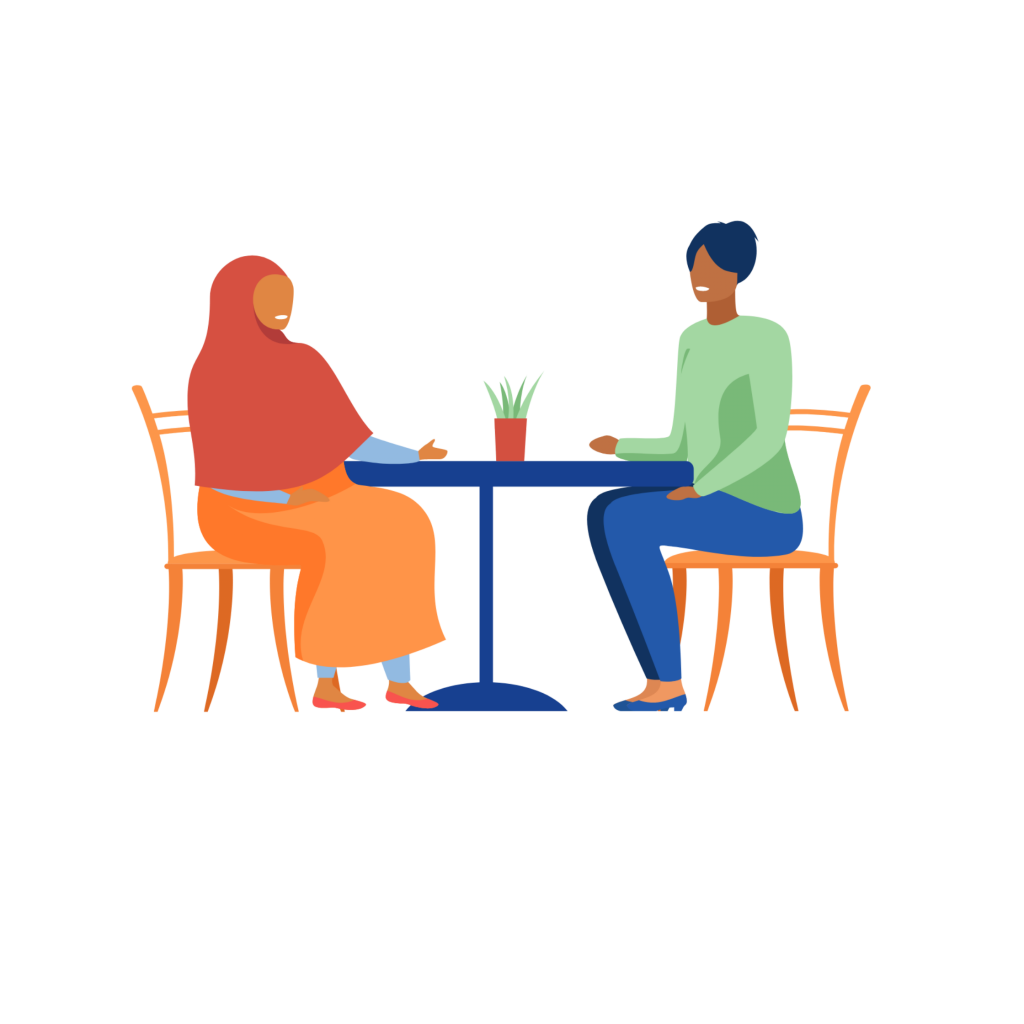
The parents join English classes. There, World Relief teachers, volunteers, and other English learners come together to practice their skills speaking. The family checks out an iPad from the technology lending library, which they use to do English homework and join classes on Zoom. Conversation cafes give language learners the chance to practice their conversational English by talking with community volunteers like you.
Starting New Jobs
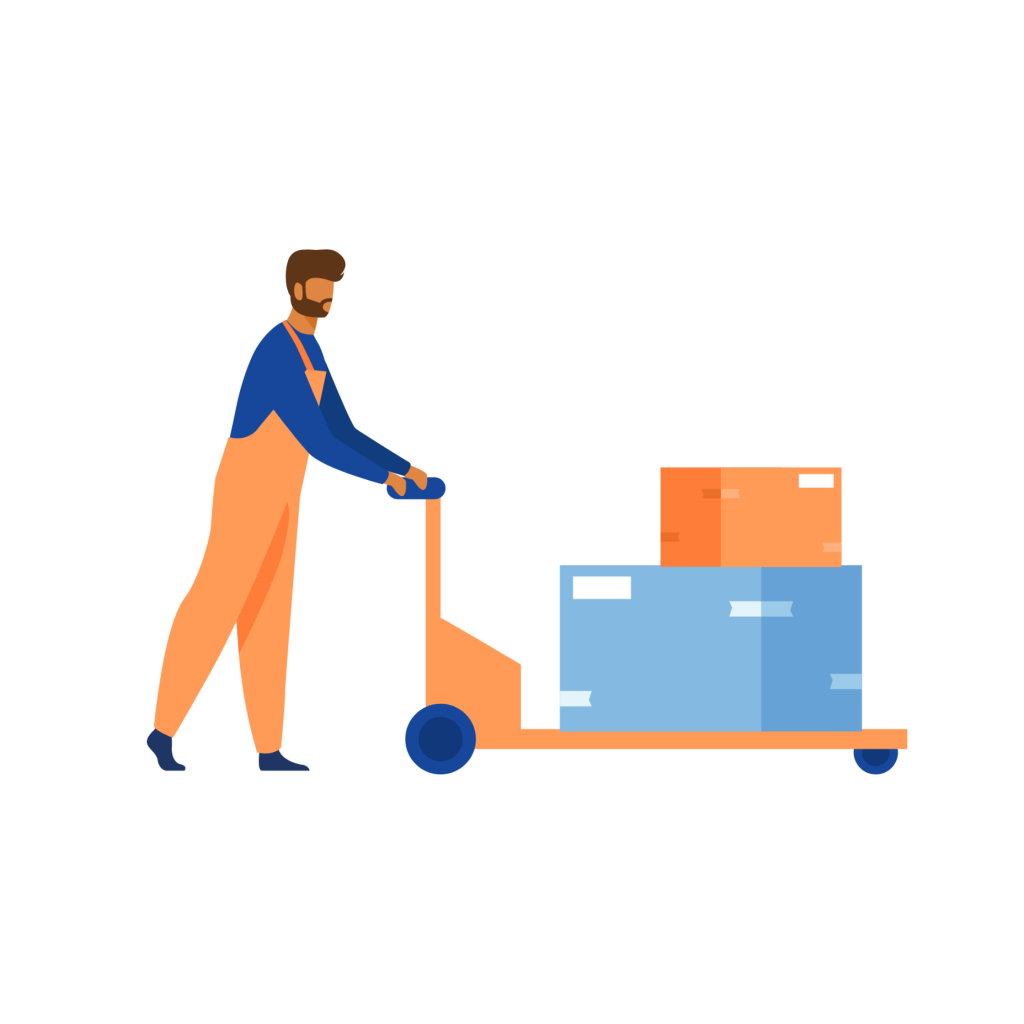
Local business partners help the parents start new jobs, and World Relief’s Employment Services team helps them prepare for their new roles and start work. Later on, the Refugee Career Pathways team will help them brainstorm their long-term career goals and develop job skills.
First Year
Immigration Processes
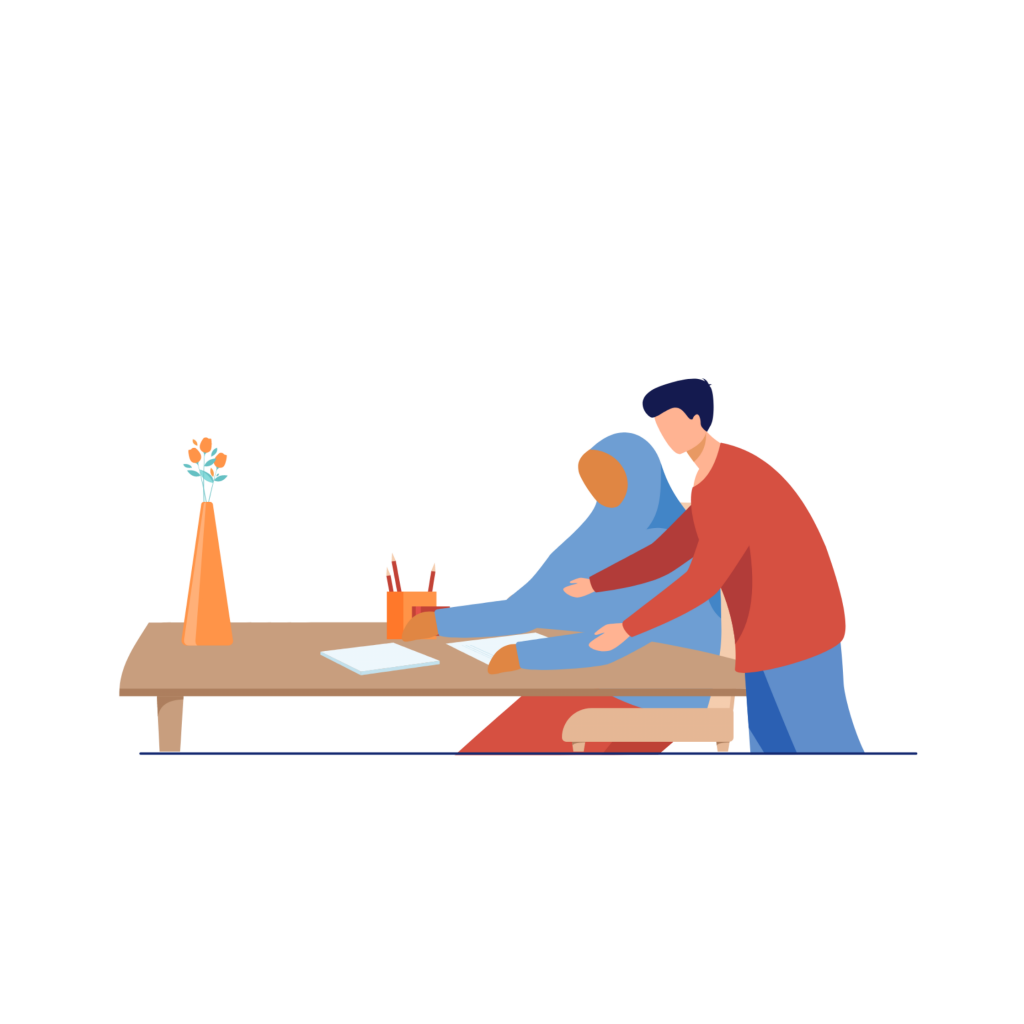
Eventually, the family will apply for Green Cards so they can stay in the U.S. permanently. They gain the help of a World Relief staff attorney who helps them take this important next step – gathering documentation, filing paperwork, and completing all necessary steps. With affordable, qualified legal help and interpretation, the family does not have to worry about their legal pathway to become permanent residents or citizens.
First Five Years
Community Engagement
After a few years, Mom Sarya gets involved in the community. She joins a parent committee at her daughter Jamila’s school. Along with the other parents, she gets to support her daughter’s teachers and help create a welcoming environment for all students.
Saving for Long-Term Goals
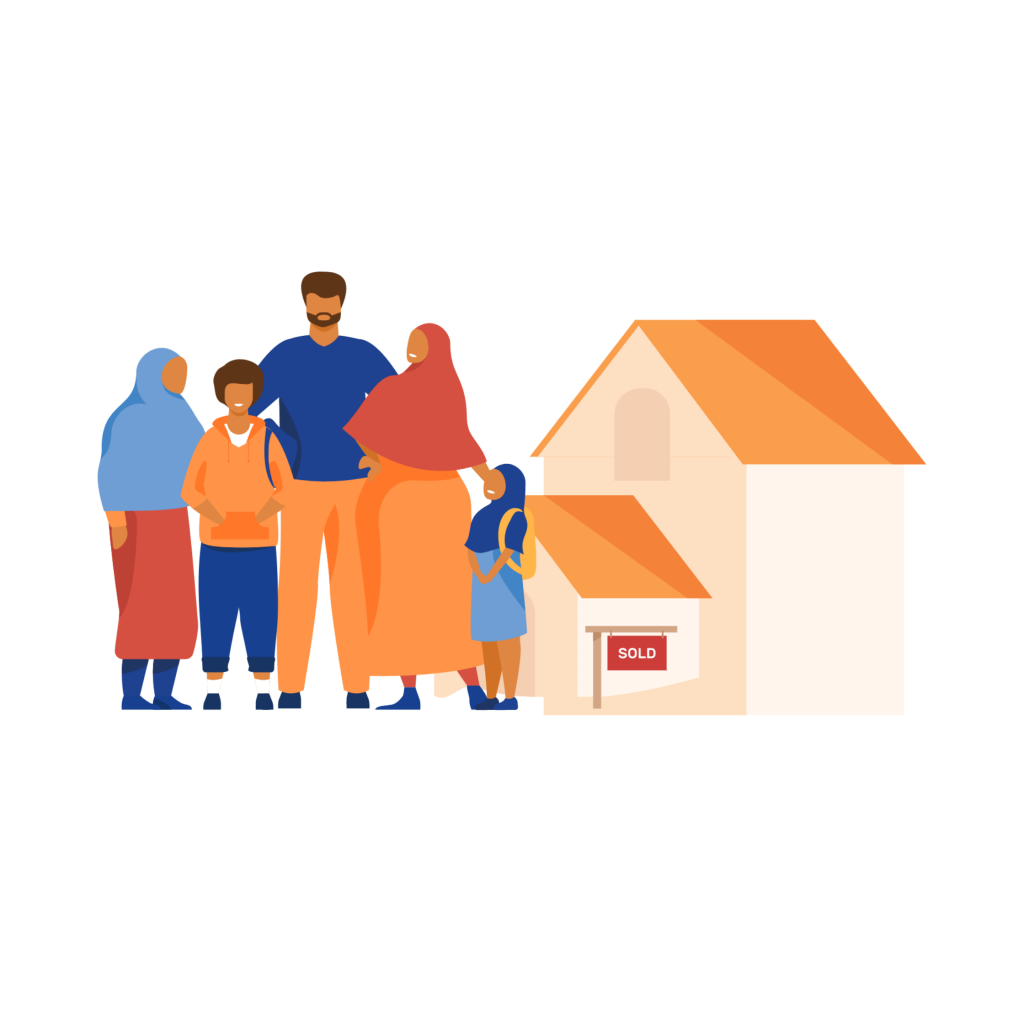
When the Ahmadi family joins the World Relief’s financial literacy program, they start learning how to manage money. They learn about debt, credit, and banking. Eventually, they join a match savings program and start saving money for a home. After a few years of diligent savings, they reach $4,000 and a partner matches their money dollar-for-dollar! They end up with a total of $8,000 – enough for a down payment on a house! Buying a home is a proud accomplishment for the family and a testament to their hard work.
Five Years and Beyond
Reaching Milestones
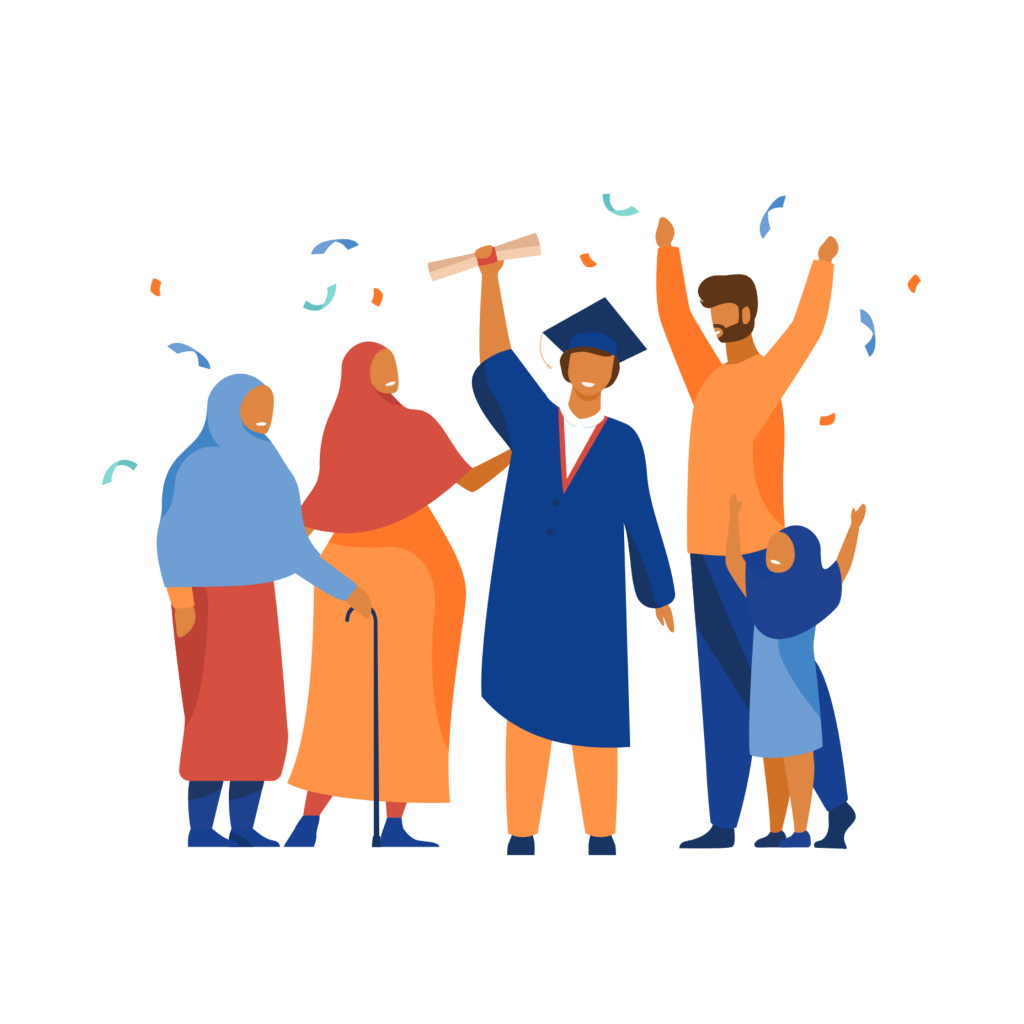
Eventually, the family becomes an integral part of their new community. As they achieve milestones in their careers, education, and personal lives, they celebrate! And we celebrate with them. For years to come, they continue progressing towards long-term goals and building relationships in the community.
Best of all, they move from being welcomed to being “welcomers” and they support other new arrivals on their refugee journey to belonging, just as people like you supported them.
Your Part in Their Journey
It is because of dedicated and compassionate people like you that families like the Ahmadis are able to rebuild their lives in a welcoming community. To find out how you can journey with families today, consider volunteering or becoming a monthly partner by joining the Path.
Read More Refugee Journey Stories
Ali’s Story: A Refugee Pharmacist Using His Career to Give Back to Others
Photo Essay: The Afghan Seamstress Sewing Beautiful Garments in Her New Community
Finally, I’m Home: Raphael’s Story of 8 Years Waiting for Resettlement

